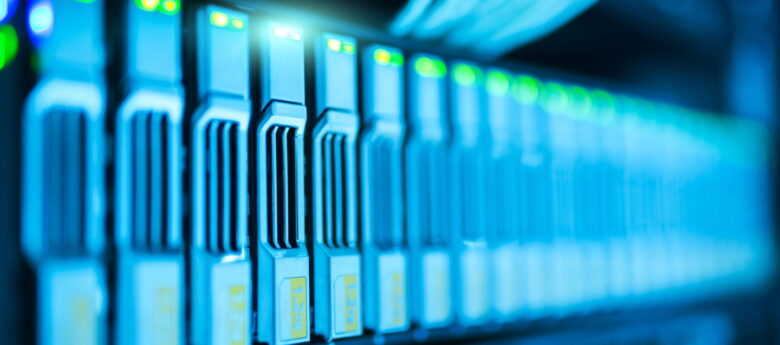Technology Shapes Data Center Sustainability Future

The demand for data centers has exploded in the last few years. The seven largest U.S. markets, for example, saw a 50% increase in megawatt net absorption of data center space from 2020 to 2021 to meet growing demand. Data centers are the engines of our digital lives, powering remote work, e-commerce and communications. But as increasingly necessary as data centers are to our modern world, they are also intensive energy users. Data centers use nearly 2% of all U.S. electricity and can account for even more use in smaller areas – for example, data centers used 14% of Ireland’s available electric power in 2021.
While these structures simultaneously contribute to global warming, they are also being impacted by the effects of climate change. This past summer, excessive heat caused service shutdowns in London and Sacramento. These structures are now at the forefront of many sustainability efforts, because of their role in producing greenhouse gasses and the impact climate change has on their performance.
For the industry and the planet, it is critical that data center operators focus their efforts on increasing energy efficiency and reducing their greenhouse gas emissions. A combination of hardware, software, and dedicated energy/sustainability professionals are required to make positive progress and stay ahead of legislation.
Automated Building Controls Can React to Emergent Cooling Needs
Cooling servers without overdrawing energy is an ongoing and increasingly serious concern for operators. There are different methods to maintain a cool environment, but outdoor climate always has to be taken into consideration – water cooling is less effective in humid environments, such as Singapore for example. In bitter cold environments, keeping the equipment from freezing solid can become a new concern. But wherever a data center is located, HVAC will always be an important element for maintaining stable temperatures in data centers.

As mentioned above, hotter days and record-breaking temperatures must be accounted for, and buildings are the first line of defense for the servers they house. Automated cooling controls, powered by artificial intelligence and activated via sensors, can accomplish several things at once. By reacting to outside temperatures in real time, buildings are able to maintain the optimal temperature inside and leverage the ambient conditions to the data center’s benefit. This lowers energy and saves costs by reducing any unnecessary cooling. The ability for sensors and controls to react autonomously also saves staff time and frees them to focus more on other aspects of the facility. These systems can help data centers become more energy efficient year-round and get them through peak temperatures without compromising server performance.
Emissions Tracking Software Will Help Data Centers Adhere to New Legislation
In 2022, the SEC proposed updated environmental, social and governance (ESG) reporting standards for publicly traded companies. These new rules, if implemented this year, would require companies to report carbon emissions not only directly from their own operations but from their supply chain. This would include the data centers they utilize – meaning operators will need to track and share that data to every public company whose services they host.
Data center operators can use software to track their utilities, which will help them meet these new requirements and also uncover opportunities for reduced energy use. Having live systems in place to track electric and water usage helps identify current energy norms across entire facilities and look at changes over time to learn what new strategies are working. This also creates opportunities for data centers to be more competitive – public companies will need to partner with the most efficient data centers and having historical records and future plans at the ready can only benefit business.
Demand for Specialized Sustainability Teams Is Growing
Sustainability personnel are becoming a fixture in industries such as aviation and higher education, and they are now a requirement in data centers as well. Sustainability itself is top of mind for most data center operators, but because energy efficiency and fidelity with the outer environment are always a consideration, it will also be an auxiliary concern for other center plans and upgrades. Employing a sustainability team is a worthwhile investment for data centers of any size. Multiple experts are able to dedicate their time, knowledge and resources toward making a center more sustainable year-by-year, which ultimately reduces costs and improves operations in multiple areas of the business.
Data Centers Are the Next Frontier in Sustainability
Sustainability in the data center is a fascinating problem to tackle: the systems used to power digital processes are energy intensive, yet it’s the very computing power that will help drive the innovation, tracking and analysis that will help address this issue. Investing data centers’ resources right back into studying data center performance and reducing greenhouse gasses is the next big step for the industry. In the coming decade, we will see technology, policy and expertise all come together to make these critical centers of business and digital interaction exist harmoniously with their surrounding communities and environment.
Rob Coyle is Global Enterprise Business Development Manager and a Data Center Infrastructure Specialist at Distech Controls, and Kendall O’Neill is Director of Sales at Atrius® | Acuity Brands.
